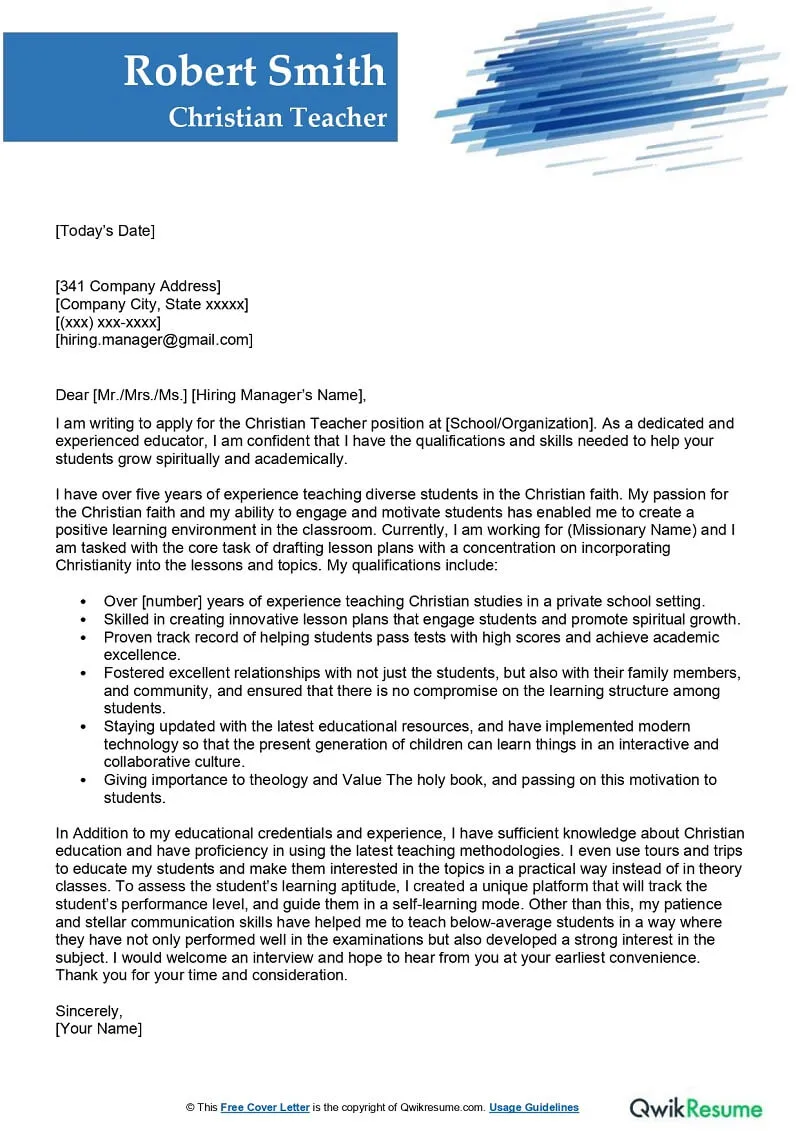What is a Cover Letter for Teachers
A cover letter for teachers is a crucial document that accompanies your resume when applying for a teaching position. It serves as a personal introduction and a way to highlight your qualifications, skills, and passion for education. Unlike a resume, which provides a factual overview of your experience, a cover letter allows you to elaborate on your accomplishments, explain your teaching philosophy, and express your enthusiasm for the specific school and role. A well-crafted cover letter can significantly increase your chances of getting an interview and ultimately landing your dream teaching job. It’s your first chance to make a positive impression on a potential employer, so it’s essential to make it count.
Why a Cover Letter is Crucial for Teachers
The teaching profession is competitive, and a strong cover letter can set you apart from other applicants. It offers you a unique opportunity to present yourself beyond the information in your resume. The cover letter enables you to tell a story, demonstrating how your skills and experiences align with the specific needs and values of the school. It shows that you’ve taken the time to research the institution and are genuinely interested in the position. Moreover, a well-written cover letter reveals your communication skills, attention to detail, and professionalism, all of which are essential qualities for a successful teacher. Without a cover letter, you risk being perceived as just another applicant, potentially missing out on an opportunity to showcase your unique value.
Top 5 Tips for a Winning Teacher Cover Letter
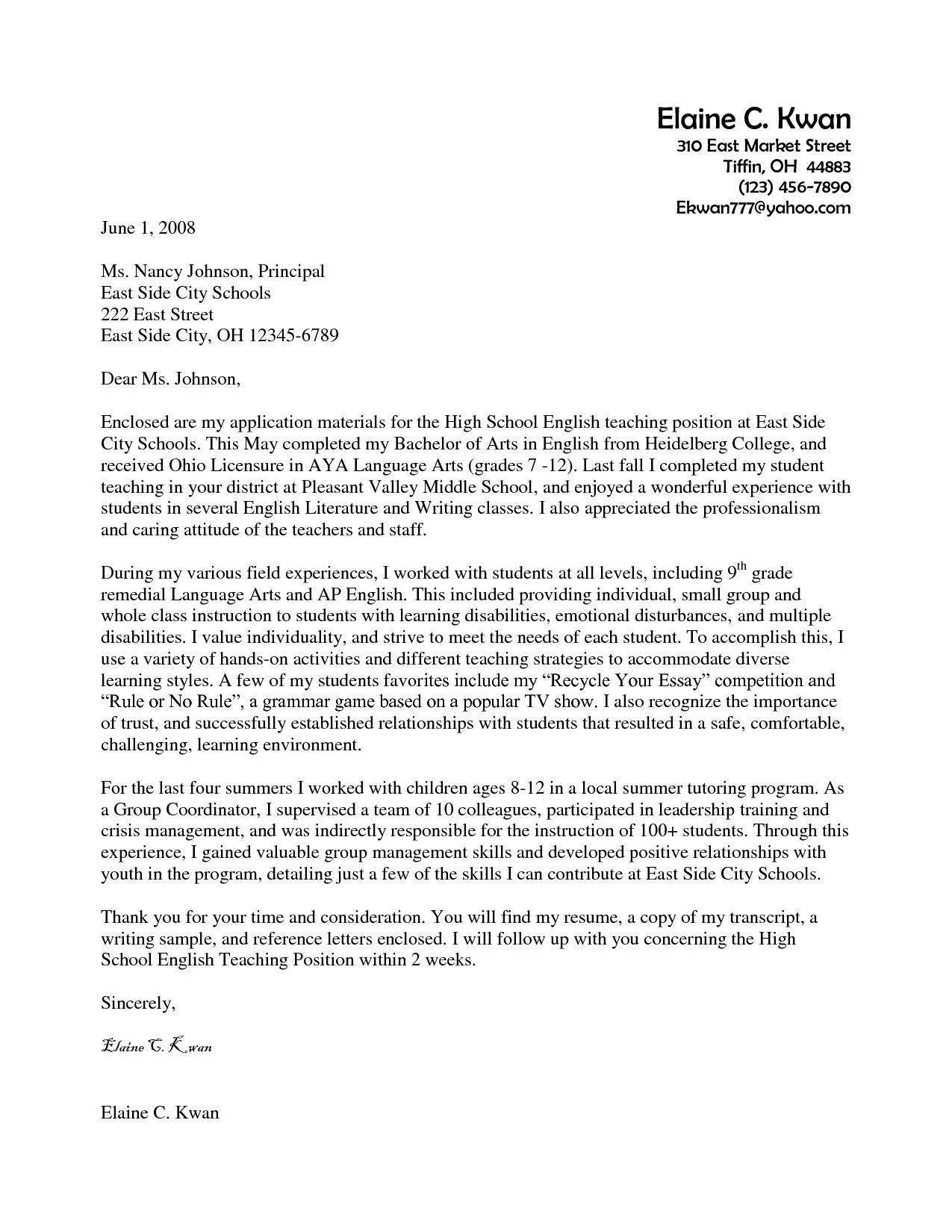
Creating a compelling cover letter can be a game-changer in your job search. Here are the top 5 tips to help you create a winning cover letter that grabs the attention of hiring managers and significantly increases your chances of getting an interview, ultimately helping you land your desired teaching position. By following these tips, you can ensure that your cover letter effectively highlights your strengths, demonstrates your passion for teaching, and convinces the hiring committee that you are the ideal candidate for the role. Each of these tips contributes to making a strong first impression and differentiating you from other applicants.
Highlight Your Skills and Experiences
Your cover letter should be a showcase of your relevant skills and experiences. Instead of simply listing your past roles, use this space to elaborate on your accomplishments and how they relate to the specific teaching position you are applying for. Provide concrete examples of how you’ve successfully used your skills in the classroom. For example, if you have experience implementing differentiated instruction, describe a time when you successfully adapted your lessons to meet the diverse needs of your students. Quantify your achievements whenever possible, using numbers to demonstrate the impact of your work. For example, you could state that you increased student test scores by a certain percentage or implemented a new program that improved student engagement by a specific amount. This makes your claims more credible and memorable.
Showcase Your Passion for Teaching
Teaching is a profession that demands passion. Your cover letter is the perfect opportunity to express your enthusiasm for teaching and your commitment to student success. Explain why you are drawn to the profession and what motivates you to work with children. Share your teaching philosophy and how it aligns with the values of the school. Talk about your belief in creating a supportive and inclusive learning environment and how you foster student growth and development. You can also mention specific teaching methods or approaches you are excited to use in the classroom. Let your passion shine through your words; this will resonate with the hiring committee and make you stand out.
Tailor Your Letter to the Specific School
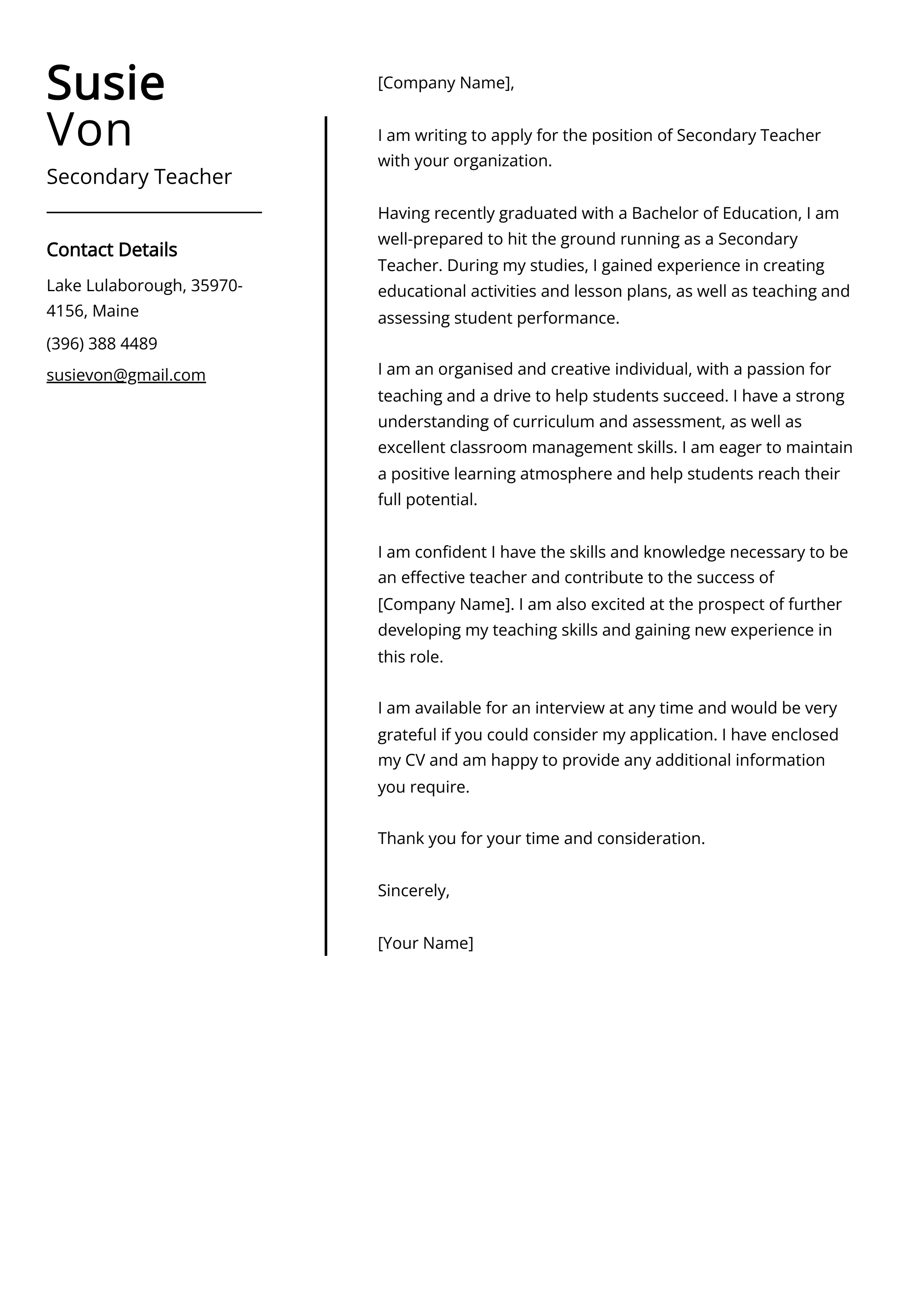
A generic cover letter is a surefire way to get your application tossed aside. Tailor each cover letter to the specific school and position you are applying for. Research the school’s mission, values, and programs. Visit their website, read their publications, and if possible, talk to current teachers or staff. Then, in your cover letter, explicitly mention how your skills and experiences align with the school’s needs and what you can bring to their community. Show that you’ve done your homework and are genuinely interested in joining their team. Demonstrating this level of personalization shows that you are genuinely invested in the opportunity and not just sending out a generic application.
Use Strong Action Verbs and Quantify Achievements
To make your cover letter more impactful, use strong action verbs to describe your accomplishments. Verbs like “developed,” “implemented,” “led,” “created,” and “achieved” convey a sense of competence and initiative. Avoid passive language and instead, focus on what you did and the results you achieved. Furthermore, quantify your achievements whenever possible. Instead of saying you “improved student performance,” state that you “increased student test scores by 15%.” Quantifying your results provides tangible evidence of your effectiveness. For example, you can mention that you “developed a new curriculum that improved student engagement by 20%” or “implemented a classroom management system that reduced disciplinary issues by 30%.” These details make your achievements more compelling and demonstrate the value you bring to the table.
Proofread and Edit Meticulously
Before submitting your cover letter, take the time to proofread it carefully. Typos, grammatical errors, and spelling mistakes can undermine your credibility and make you appear unprofessional. Read your letter aloud to catch any awkward phrasing or errors that you might miss when reading silently. Ask a friend, family member, or career counselor to review your letter for clarity, grammar, and style. Pay close attention to details such as correct names, dates, and school information. Ensure that your letter is well-organized, easy to read, and free of errors. A polished cover letter demonstrates your attention to detail, which is a critical quality for any teacher.
Essential Elements to Include in Your Cover Letter
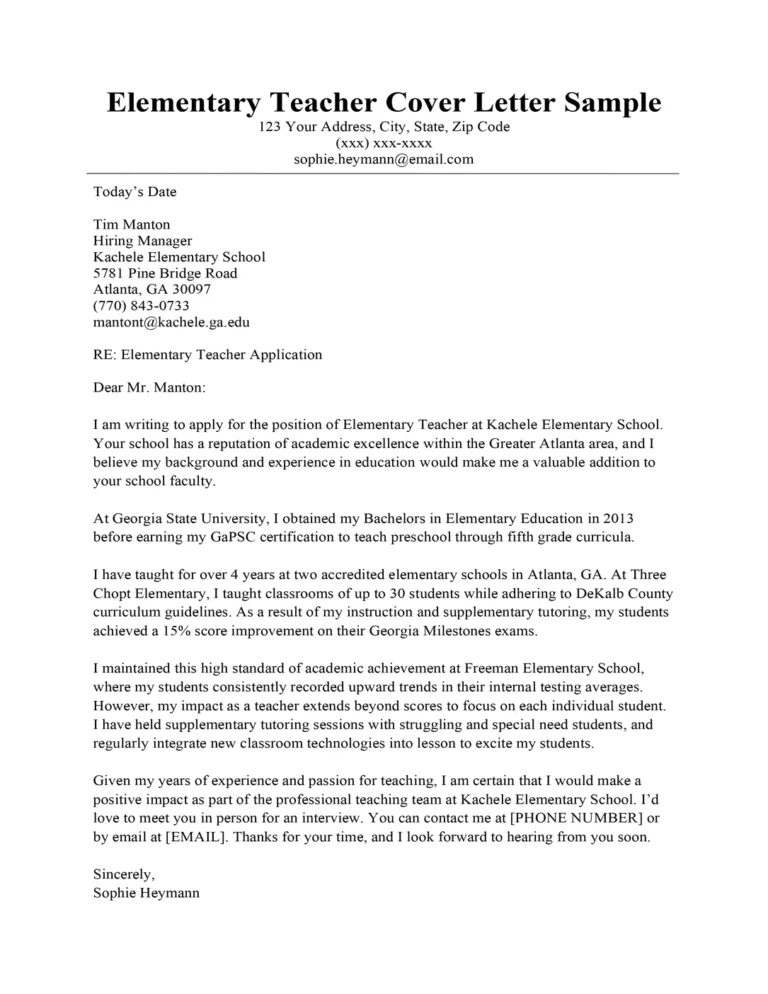
A well-structured cover letter should include the following essential elements to make a strong impression on the hiring committee. Each element plays a crucial role in presenting you as a qualified and enthusiastic candidate.
Contact Information and Date
Start your cover letter with your contact information, including your name, address, phone number, and email address. This information should be clearly displayed at the top of the letter. Also, include the date of the letter. This provides the recipient with immediate information about how to reach you and when the letter was written.
Formal Salutation
Address your cover letter to a specific person whenever possible. Research the name of the hiring manager or principal and use their name in the salutation (e.g., “Dear Mr. Smith” or “Dear Dr. Jones”). If you are unable to find a specific name, use a general greeting such as “Dear Hiring Committee” or “Dear Principal.” Avoid generic salutations like “To Whom It May Concern” as they can make your letter feel impersonal.
Opening Paragraph Grab Attention
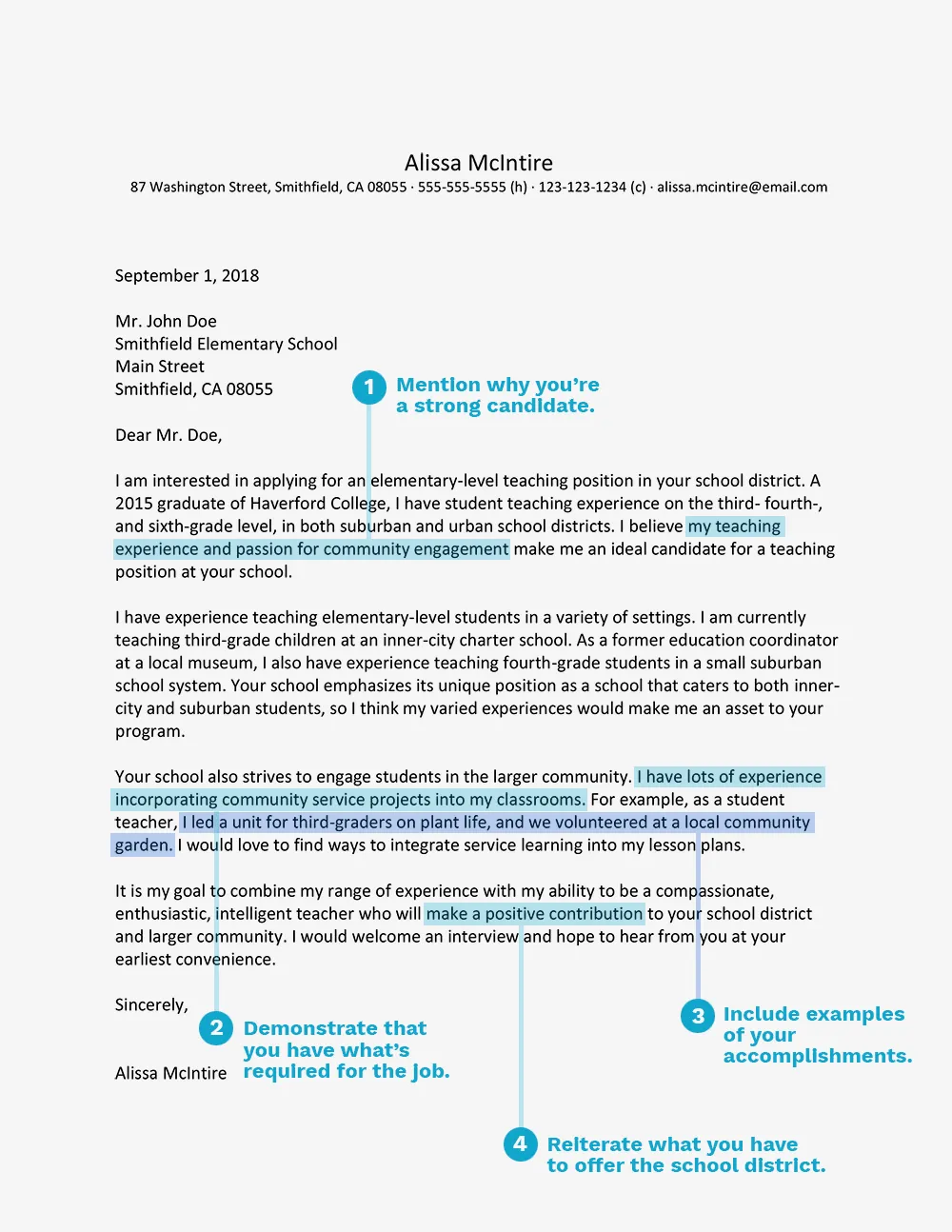
The opening paragraph of your cover letter is your opportunity to grab the reader’s attention. Start with a strong statement that highlights your interest in the position and the school. Mention where you saw the job posting and briefly state why you are a good fit for the role. You can also share a brief anecdote or statement about your passion for teaching. Make sure your introduction is concise, engaging, and immediately conveys your enthusiasm for the position.
Body Paragraphs Highlight Key Qualifications
The body paragraphs are where you expand on your qualifications and experiences. Highlight your key skills, such as classroom management, curriculum development, and student assessment. Provide specific examples of how you have used these skills to achieve positive outcomes in your previous roles. Tailor these examples to align with the needs of the school and the specific requirements of the job. Use strong action verbs and quantify your achievements whenever possible to make your accomplishments more compelling.
Closing Paragraph Express Enthusiasm and Call to Action
In your closing paragraph, reiterate your enthusiasm for the position and express your interest in an interview. Thank the hiring manager for their time and consideration. Provide a call to action, stating that you are available for an interview at their earliest convenience. Reiterate your contact information and express your eagerness to discuss how you can contribute to the school community. A strong closing paragraph leaves a lasting impression and encourages the hiring manager to take the next step.
Formatting Your Cover Letter
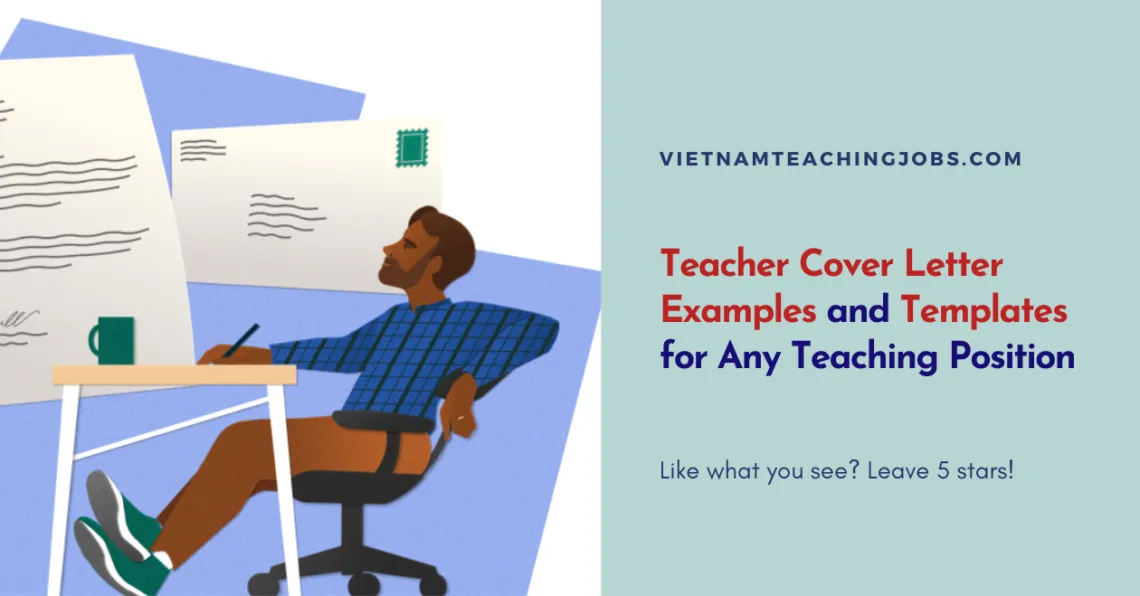
The format of your cover letter plays a crucial role in making a positive impression. A well-formatted letter is easy to read, professional-looking, and demonstrates your attention to detail. Proper formatting improves readability and shows that you care about presenting your skills and experience in a clear and organized manner. Here are the essential formatting elements to consider to ensure your cover letter looks professional and is easy to read.
Choosing the Right Font and Font Size
Select a professional and easy-to-read font, such as Times New Roman, Arial, or Calibri. The font size should be between 10 and 12 points to ensure that the text is easily readable without being too small or overwhelming. Consistency in font choice throughout your cover letter is also important. Using a consistent font creates a cohesive and professional look. Avoid overly decorative or complex fonts that can be difficult to read and detract from the content of your letter. A clean and simple font helps the reader focus on your qualifications and enthusiasm.
Proper Margins and Spacing
Use standard 1-inch margins on all sides of the cover letter to provide ample white space. This helps make the text more readable and prevents the document from appearing cramped. Double-space between paragraphs to further improve readability and visual appeal. Single-spacing within paragraphs is typically used, but ensure there is enough space between lines to prevent the text from appearing cluttered. Consistent margins and spacing create a balanced and professional look, making the letter more visually appealing and easier for the reader to absorb the information.
File Format and Submission
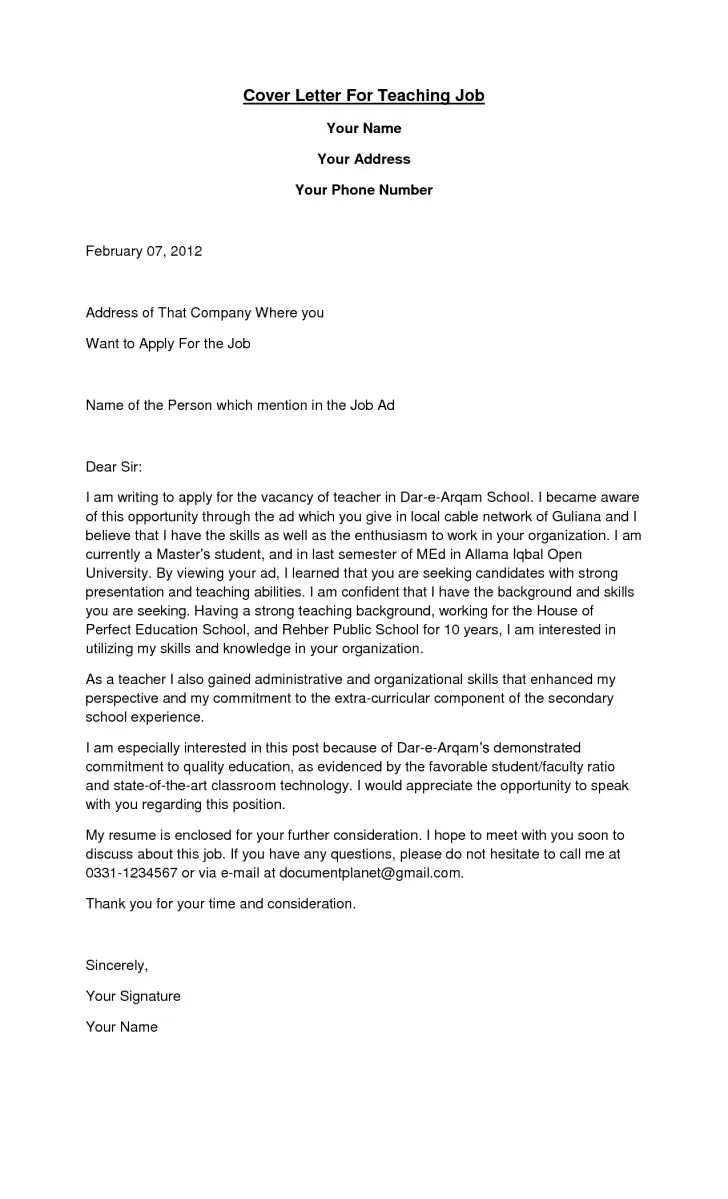
Save your cover letter in a professional file format, such as PDF (Portable Document Format), to ensure that the formatting remains consistent across different devices and platforms. This ensures that your cover letter looks exactly as you intended, no matter where it is viewed. Before submitting, carefully review the job posting to see if there are any specific file format requirements. If no specific format is requested, PDF is generally the preferred format, as it maintains the document’s integrity. Always double-check that your cover letter is correctly attached to your email or uploaded to the application system before submitting it.
Examples of Powerful Phrases
Using powerful phrases in your cover letter can make a significant difference in how your qualifications are perceived. These phrases can effectively highlight your skills, express your passion for teaching, and encourage the hiring committee to learn more about you. Here are examples to help you craft a compelling cover letter.
Highlighting Achievements
When describing your achievements, use phrases that demonstrate your impact and quantify your results. Instead of saying, “I improved student engagement,” try “Implemented a new classroom management system, resulting in a 25% increase in student engagement.” Or, “Developed and implemented a differentiated lesson plan, which led to a 10% increase in students meeting grade-level standards.” These phrases emphasize your ability to achieve positive outcomes and make your accomplishments more compelling.
Expressing Enthusiasm and Passion
To show your enthusiasm and passion, use phrases that express your excitement about the role and the school. For example, you could say, “I am excited about the opportunity to contribute to [School Name]’s vibrant learning community.” Or, “My passion for teaching aligns perfectly with [School Name]’s mission of fostering a love of learning.” These phrases showcase your genuine interest in the position and demonstrate that you are a strong cultural fit.
Call to Action Phrases
In your closing paragraph, use phrases that encourage the hiring manager to contact you for an interview. For instance, “I am eager to discuss how my skills and experiences can benefit your students” or “I am available for an interview at your earliest convenience and welcome the opportunity to elaborate on my qualifications.” These phrases clearly communicate your interest in moving forward in the hiring process and make it easy for the hiring manager to take the next step.
Common Mistakes to Avoid
Avoiding common mistakes can significantly enhance your cover letter and increase your chances of making a positive impression. Many applicants make errors that can detract from their qualifications and professionalism. Here are some common mistakes to avoid to ensure your cover letter effectively showcases your abilities.
Generic Letters
Sending a generic cover letter that is not tailored to the specific school or position is a significant mistake. Generic letters show a lack of effort and can make you appear uninterested in the specific opportunity. Always customize your cover letter to reflect the school’s mission, values, and the requirements of the job. Research the school and highlight how your skills and experiences align with their specific needs and culture. Personalized cover letters demonstrate that you are genuinely interested in the role and have taken the time to understand the school’s priorities.
Typos and Grammatical Errors
Typos and grammatical errors can undermine your credibility and make you appear unprofessional. A cover letter filled with mistakes suggests a lack of attention to detail, which is a critical skill for teachers. Always proofread your cover letter carefully before submitting it. Read it aloud, ask a friend or family member to review it, and use grammar and spell-checking tools. Ensuring your cover letter is error-free demonstrates your professionalism and your commitment to excellence.
Focusing on Yourself Instead of the School
While it is important to highlight your skills and experiences, avoid making your cover letter overly self-centered. Focus on how your skills and experiences can benefit the school and its students. Show that you understand the school’s needs and that you are committed to contributing to the school community. Highlight how your qualifications align with the school’s mission and values, and focus on what you can bring to the table. A cover letter that emphasizes how you can contribute to the school’s success is much more compelling than one that focuses solely on your achievements.
Conclusion
A well-crafted cover letter is a vital component of your teaching job application. By following these tips, you can create a cover letter that highlights your skills, showcases your passion, and increases your chances of landing your dream teaching position. Remember to tailor your letter to each school, use strong action verbs, and always proofread carefully. With the right approach, your cover letter can be your key to unlocking a successful teaching career. Good luck with your job search!
